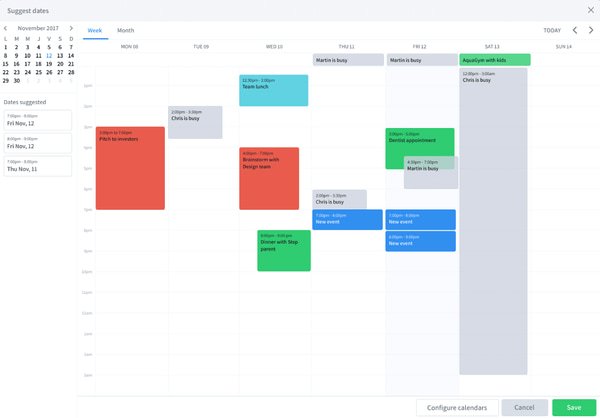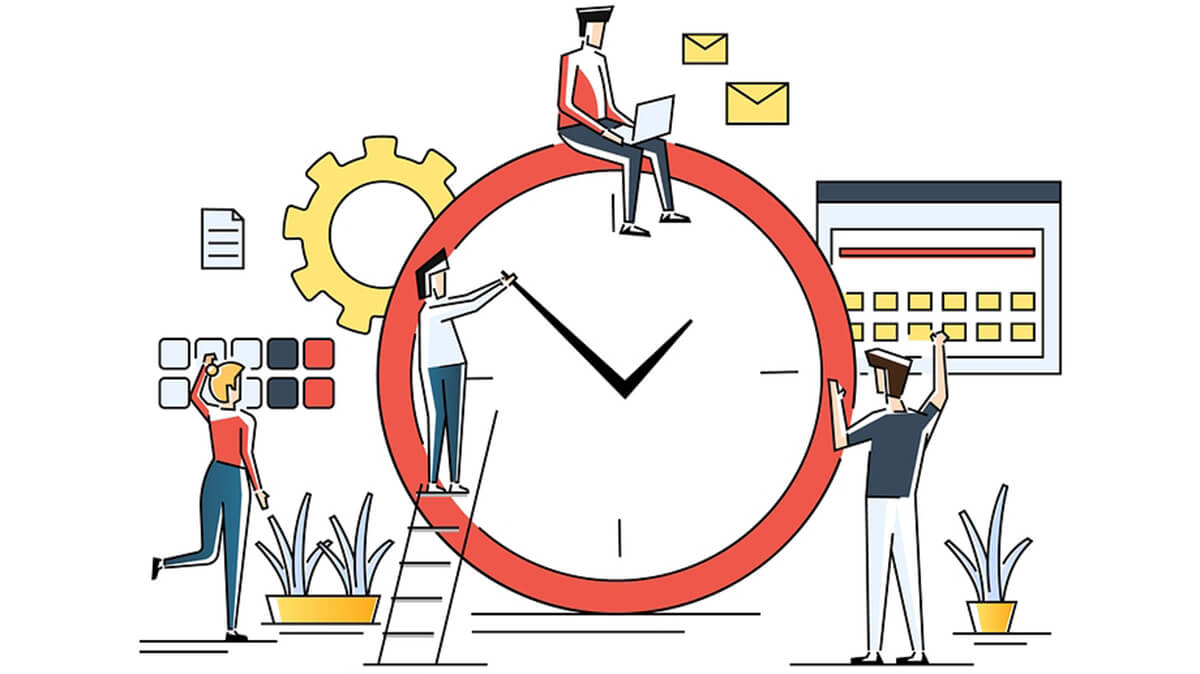Hello!
 Which is the best way to schedule your day for achieving maximum productivity? Some books and articles offer the “perfect schedule.” Unfortunately, in reality, no size fits all schedules.
Which is the best way to schedule your day for achieving maximum productivity? Some books and articles offer the “perfect schedule.” Unfortunately, in reality, no size fits all schedules.
Everyone has their strengths and weaknesses, and time management and productivity vary from person to person.
Historically, great personalities had different techniques that depended on some aspects, including individual personalities, circumstances, and energy levels.
Many methods help people to schedule their daily activities and achieve more productivity. And with more people using their mobile devices to keep track of everything, apps, and solutions that are focused on the time clock and daily scheduling, are quickly growing in usage.
However, these methods are not complicated and depend on how one finds the right mix.
Time Blocking Method
 Time blocking means planning the day. By dedicating specific hours for each task, one can estimate what one will do and when they will accomplish in that period. This planning helps one to achieve more during the day. By entering each task in the calendar, one can focus on them throughout the day.
Time blocking means planning the day. By dedicating specific hours for each task, one can estimate what one will do and when they will accomplish in that period. This planning helps one to achieve more during the day. By entering each task in the calendar, one can focus on them throughout the day.
One usually knows the routine work one has to do every day in whatever profession the person is. Therefore, when scheduling the tasks, it is good to identify between proactive and reactive tasks.
Identifying the tasks such as crucial projects, drafting necessary documents, etc., as proactive needs to be completed first, and it helps one make progress daily.
The reactive tasks are attending to emails, impromptu meetings, allowing time for interruptions and breaks. If one attends to the most challenging task first thing in the morning, leaving emails and other items later helps one be more productive.
Time blocking enables one to list the “standard to do” things with a specific time allotment for each task.
This rigid structure of daily planning helps one to accomplish their tasks in the given time frame. One will see the difference in achieving their goals in a 40-hour weekly schedule if done in a structured manner. Otherwise, the same amount of work takes 60+ hours if done without any planning.
MIT Method
 We are all guilty of either procrastinating or doing the less important tasks first. As a result, we never get around to doing the most significant tasks during the day. The most important task (MIT) is all about focusing on the indispensable stuff.
We are all guilty of either procrastinating or doing the less important tasks first. As a result, we never get around to doing the most significant tasks during the day. The most important task (MIT) is all about focusing on the indispensable stuff.
One may have many things to do in a day, and trying to do all of them simultaneously can be disastrous. The best thing would be identifying a couple of tasks that are the most important or urgent and focus on completing them first.
Most of the days, one will see that only a few essential things need attention. The rest are the routine work, and surprisingly, distractions take away significant chunks of personal time. Now checking constant notifications on mobile phones, emails, and if most of them are irrelevant, filling in the inbox, random calls affect productivity.
If one can complete the essential tasks first, one will find enough time to look at things, many of which may not be necessary or best ignored.
The MIT method and the time blocking method can help one achieve their targets during the initial part of the day. One will also find having more time in hand later to attend to calls, emails, and meetings or even taking breaks. In the long run, one will see that they have achieved a lot without wasting time on meaningless things.
Pomodoro Technique
 This technique is working in short and productive bursts and then taking a brief break throughout the day. This method works well for many people who cannot work in a single stretch or get distracted easily. This method is straightforward, and all one requires is to keep an eye on the clock or set a timer to get back to work after a break.
This technique is working in short and productive bursts and then taking a brief break throughout the day. This method works well for many people who cannot work in a single stretch or get distracted easily. This method is straightforward, and all one requires is to keep an eye on the clock or set a timer to get back to work after a break.
One can divide their day into four to five schedules with a set time frame for each task. It helps to break down a large amount of work into manageable tasks at regular intervals.
For example, one can start by selecting any specific piece of work or chore right at the beginning of the day, set a time frame with the help of a timer, and work on the task in a focused manner till the timer ends.
Take a short break of about five minutes and then come back to the task at hand. One will see that the focus and productivity are better. One also tends to become less tired mentally.
 This method, however, needs complete discipline and one cannot break it in between the session. One also needs to avoid getting distracted by a call or a co-worker.
This method, however, needs complete discipline and one cannot break it in between the session. One also needs to avoid getting distracted by a call or a co-worker.
There is a common fallacy that people should work steadily throughout the eight-hour daily schedule with only lunch or tea breaks. It is to achieve maximum output, though, in reality, it is evident that if there is a lack of planning and focus, productivity suffers.
The other downside of this method is that the visiting boss may catch one during the interval between the sessions. One will have to explain the work done. At other times there might be tasks that will have deadlines and are time-consuming. In that case, one will have to work through the day completing it.
Many people follow the mix of all the processes mentioned above and find that they are most productive. It can be done on different days, maybe on the same days depending on the task.
However, the bottom line is prioritizing the work with daily scheduling.
Time Tracking for Employers
 For employers, time tracking is essential to understand how the employees utilize their daily working time. Time tracking gives insights into productivity and workflow.
For employers, time tracking is essential to understand how the employees utilize their daily working time. Time tracking gives insights into productivity and workflow.
Employees also use time tracking software to calculate the hours worked by employees for specific projects. The compensation of the employees is on an hourly basis. Thus, time tracking proves to be helpful for the managers to understand how productive their employees are and which of the projects take what amount of time.
If one is in the service business, scheduling the workflows and tracking time for each employee helps improve operational efficiency. This way, one can check the productivity levels of each employee and the overall profitability of the organization.
Also read: Patreon Emerges as the Unexpected Powerhouse in Podcasting
Takeaway
 Whether it is individual employees or employers, the question is whether one has the work organized in such a way so that they are efficient.
Whether it is individual employees or employers, the question is whether one has the work organized in such a way so that they are efficient.
For individuals, planning on calendars and timesheets can be sufficient for daily work.
For bigger-size companies, effective time tracking, billing, and payroll of their employees can only be achieved with software.
Thank you!
Subscribe to our newsletter! Join us on social networks!
See you!






